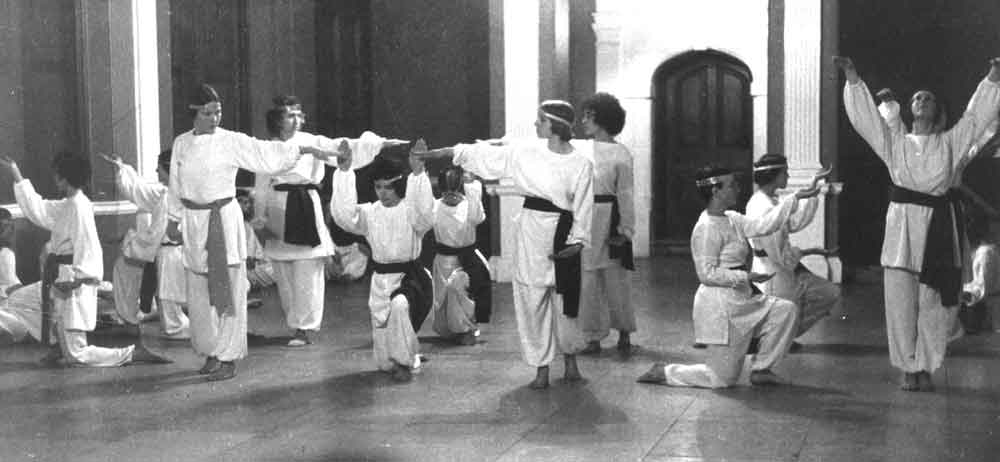Gurdjieff Movements History

What is today known as The Gurdjieff Movements is a repertoire of ancient and sacred dances and esoteric movements gathered from closed communities, temples and monasteries in the Middle East and Asia. Monastic communities have long understood the value of movement as a means of acquiring knowledge without language; and these movements with their original music, were learnt by the philosopher G. I. Gurdjieff (1866-1949) during his extensive travels at the end of the 19th Century. After the Russian revolution Gurdjieff moved west, settling in Paris in 1922 where The Movements were taught to his followers at the Institute he founded at Fontainebleau.
The Movements discipline was brought to England in the 1930s and taught to Ouspensky’s pupils at Lyne Place, Surrey and Colet House, then called Colet Gardens, in London by Mme Ouspensky, Jessmin Howarth and Rose Mary Nott. Responsibility for teaching The Movements as part of a Fourth Way discipline was passed to those who were authorised to safeguard the tradition and carry it forward.
In 1925 Gurdjieff more or less abandoned The Movements and for ten years concentrated on writing. Towards the end of his life Gurdjieff returned to The Movements, choreographing a great many of his own devising, including the 39 series. These have come to be known as the later movements to differentiate their psychological effect from the original or early Movements which are more spiritual in nature.
